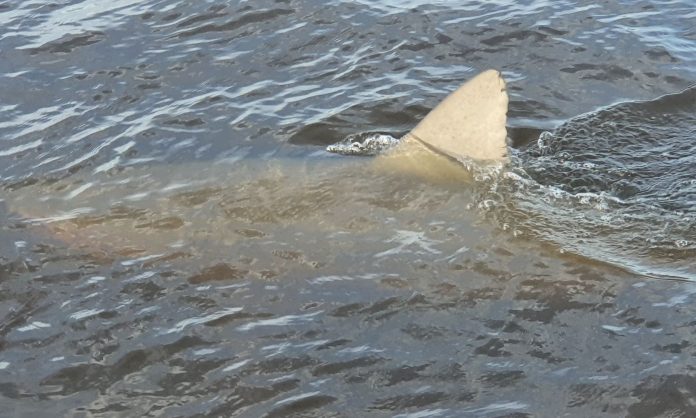The secret lives of bull sharks on the Sunshine Coast will be studied for the first time as scientists identify a stark change in their patterns this summer.
The major project aims to uncover where they live and move, what they do and to help improve the safety of the public.
It will focus on the four catchments of Noosa, Maroochy and Mooloolah River and Pumicestone Passage, with at least 20 to 30 bull sharks caught and tagged in each waterway.
The study comes as more bull sharks are being seen closer to shore this summer, which scientists believe is linked to the current La Nina weather pattern.
It’s thought higher rainfall could be both flushing out juveniles from the rivers into inshore areas and attracting them with more abundant food sources.
“Being pushed out of those rivers (could be) one reason why, after rainfall, we see more bull sharks around in the near-shore environment,” said Dr Bonnie Holmes, a lecturer in animal ecology at the University of the Sunshine Coast (USC).
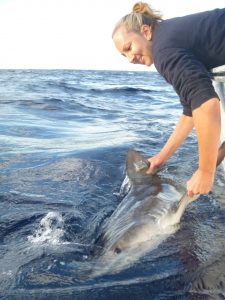
“The second reason is freshwater draining from catchments makes the area more productive; you can see plankton blooms which then brings the baitfish which of course is what juvenile bull sharks can feed on.
“The likelihood of the beachgoers seeing them during those times of rainfall is higher because of those reasons.”
Dr Holmes said many private details of bull sharks’ lives on the Coast were still largely unknown, including population numbers and where they travel and live.
The first-ever study of its type in our region, starting mid-year, will be a collaboration between the University of the Sunshine Coast (USC) and Griffith University with funding from several sources.
Researchers will use acoustic and satellite tags to track scores of bull sharks over at least three years, and potentially longer, to try and paint a comprehensive picture of their activities.
The data would be used to help improve safety for people in the surf and waterways, as well as inform the State Government’s Shark Control Program.
“No-one’s done it up here which is why we were keen to pull a big collaborative program together,” said Dr Holmes.
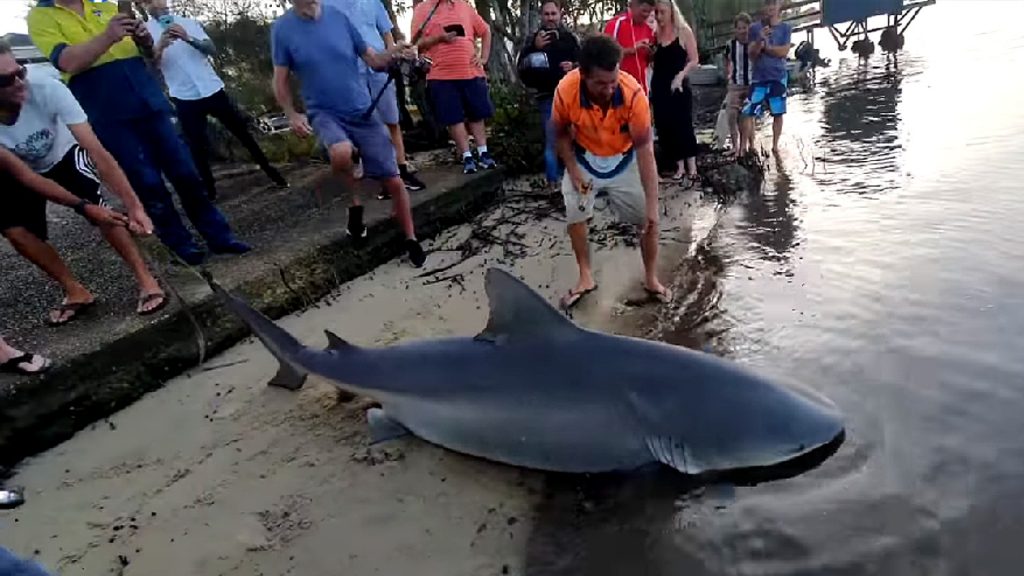
“We will … catch a whole bunch of bull sharks at different life stages and fit them with acoustic tags and satellite tags and monitor what they are doing for the next three to five years.
“From the research we are doing is understanding what the risk is? What’s the relative risk to beachgoers using those waters?
“And we don’t know that yet because we don’t know anything yet about how they’re moving through, when they’re moving through, how many of them are moving through and how important those four river systems are as nursery areas.
“We’re all trying to work together to move forward both for the safety of people using the water but also the safety and the ongoing survival of sharks, and also whales and turtles and dolphins and fish and all those other animals that are interacting with the shark line and nets.”
Like stories that inform, connect and celebrate the Sunshine Coast? So do we. Join an independent local news revolution by subscribing to our free daily news feed: Go to SUBSCRIBE at top of this article to register
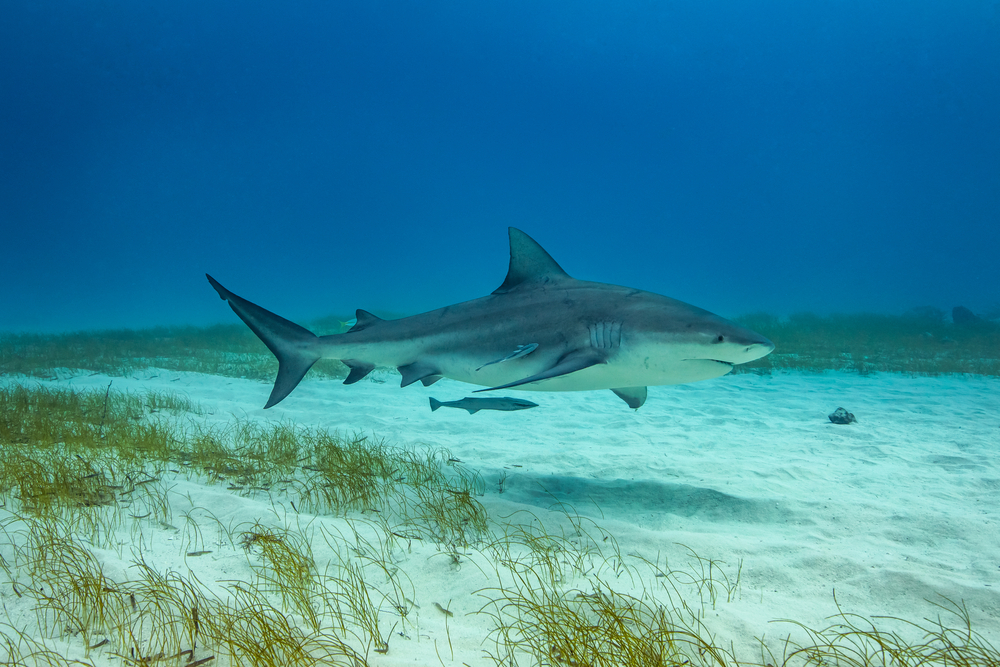
Shark Control controversy
Having previously studied tiger sharks, Dr Holmes said a lot of her work focused on making “healthy changes” to the state’s Shark Control Program to not only reduce shark deaths but protect “tonnes” of bycatch like whales.
Figures show the Shark Control Program caught 943 sharks statewide in 2021, the highest number in 20 years and 202 more than the previous year.
So far in 2022, there have been 125 sharks caught in Queensland and 15 in the Sunshine Coast region.
Dr Holmes said changes to the Shark Control Program could include investing in new technology like shark-spotting drones and tagging and tracking sharks to alert surfers and swimmers when they’re around.
“Given the Noosa region has the highest bull shark catch (in Queensland) in those nets we really need to understand what bull sharks are doing and how they are using these environments on the Sunshine Coast,” she said.
“Until we have that basic biological and ecological information, it’s really hard for the Queensland government to be confident to make decisions on changing those until we understand.”
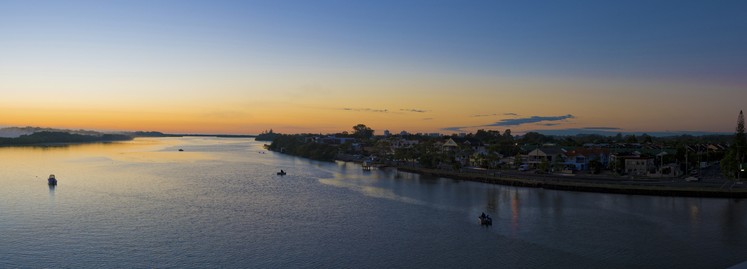
Dr Holmes said one fact that was known about bull sharks was the vast distances they could swim, from north Queensland to southern NSW.
“They move all the way to Sydney Harbour and spend summer there and with climate change they will be moving even further south, I have no doubt, because the tiger sharks are doing the same thing,” she said.
“And then they cruise all the way up the Coast and stop in at different locations.
“But we don’t know what they are doing when they get here because nobody has done that fine scale of a particular area.
“We know they go all the way to Townsville and all the way out to the islands; they can move just like tiger sharks, they have a large home range.
“But what they do and how attached the females are to the rivers they were birthed in we don’t know, so hopefully we’ll be able to look at that too as part of this project.”
Dr Holmes said the study had received funding from the Noosa Biosphere Reserve Foundation, Fisheries Qld and Sunshine Coast Council, and was being undertaken by USC in conjunction with Griffith University.
The team has applied for grant from the Australian Research Council.
Donations needed
Dr Holmes said she was also seeking philanthropic donors to support USC in the purchase of a new open-water vessel which is lacking from its fleet.
“This is causing us to have to spend thousands of our precious research dollars on boat hires to be able to work the Sunshine Coast waters for all of our shark, fish, dolphin and whale research currently,” she said.
“We are trying to find $50,000 to $60,000 to support this.”
To lend your support email Dr Bonnie Holmes at bholmes@usc.edu.au


